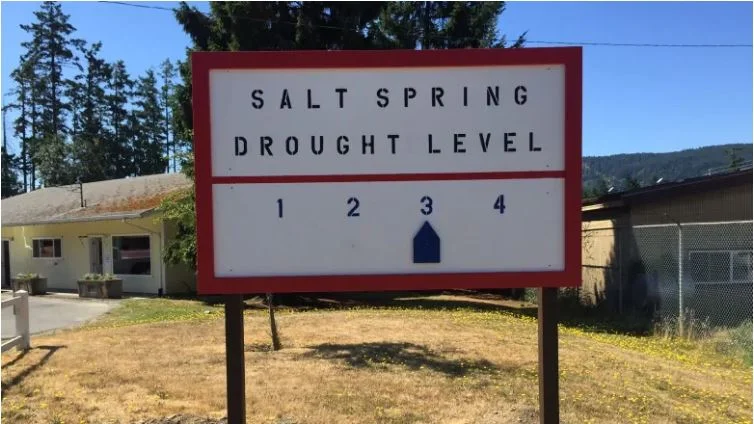Experts say the NWT’s wildfire season could affect water sources by altering water quantity and quality, potentially straining treatment systems. The territory’s extreme 2023 wildfire season has already taken a heavy toll on residents and fouled air quality for months. But fires can affect water too – sometimes in substantial ways.Experts say the NWT’s wildfire season could affect water sources by altering water quantity and quality, potentially straining treatment systems. The territory’s extreme 2023 wildfire season has already taken a heavy toll on residents and fouled air quality for months. But fires can affect water too – sometimes in substantial ways.
Diving for debris: Kingston divers pull garbage out of Lake Ontario on day of cleanup, awareness
Pulling a large truck tire from the water, volunteer Derek Evans says he is not sure how long it has been at the bottom of Lake Ontario. It’s filled with zebra mussels and mud, but the rubber has the potential to be a serious issue. "This is at least 50 pounds," Evans says. "It definitely would be a lot of damage to the fish and the wildlife in the water." Getting this tire, and other garbage, is part of a massive project called, 'Kingston Waters Clean Up.' More than 70 divers, kayakers and shorelines volunteers are bagging up garbage to keep it out of the water and drawing awareness to the issue, explains organizer Guillaume Courcy.
Sustainability of high-mountain water sources focus of new UNESCO Chair
Climate change is endangering critical mountain water sources like the Canadian Rockies snowpacks and glaciers, with potential for dire implications. To address the challenges of sustaining and managing these mountain waters, UNESCO has announced the creation of the UNESCO Chair in Mountain Water Sustainability. The chair will be hosted at the University of Calgary (UCalgary) and co-held by six international world-class water researchers, including Dr. John Pomeroy (PhD) and Dr. Corinne Schuster-Wallace (PhD) from the University of Saskatchewan (USask).
As water sources dry up, towns in southern Quebec sound the alarm
During an unrelenting stretch of dry, hot weather last August, Rachel Mahannah and her husband spent two hours a day hauling water from their other farm a kilometre and a half away, to make sure their dairy cows didn't get dehydrated. The well on the dairy farm, 70 metres deep, had almost run dry. "That was the first kind of red flag that came up for us," said Mahannah, who co-owns Mahvhays dairy farm in Brigham, Que., about 75 kilometres southeast of Montreal.
Surrounding municipalites express concern with Guelph’s plans to add water wells
The City of Guelph is looking to build future wells in neighbouring municipalities such as the Township of Guelph/Eramosa and Puslinch as it has exhausted its water sources. Guelph/Eramosa council received an update on talks between the city and the two townships from Kyle Davis, the risk management official with Wellington County at its meeting this week with regards to the City of Guelph’s water supply master plan. The city is required to update its water supply master plan every five years, and it’s looking for alternate sources of water due to anticipated growth.
Powell River City Council restricts water bottling
City of Powell River Council passed a bylaw that prohibits bottling of most water within city limits. At the March 4 city council meeting, council approved an amendment to the city’s zoning bylaw, which will prohibit the bottling of water or other beverages where the source of the water is other than the municipal water supply supplied directly to the property on which the bottling is taking place. This would allow continued local bottling of water for large jugs commonly used in water coolers, which is bottled by several local businesses.
The unknown impact of microplastics in drinking water
Microplastics may be contaminating our drinking water, according to a study published by researchers at the Geological Society of America. Their chemical threat stems largely from their ability to transport harmful compounds on their surfaces, meaning that when organisms at the base of the food chain ingest microplastics, they ingest toxins too. These toxins can build up and eventually result in responses like organ dysfunction, genetic mutation or even death. The researchers found bisphenol A (BPA), a chemical used to make plastics, in all 47 human samples.
Young Innovators: New U of S app tracks causes of algae bloom
A new University of Saskatchewan smartphone app will help farmers and communities identify hotspots of nutrient contamination in freshwaters and possibly predict where algae blooms — slimy, plant-like green organisms that hinder water quality — are likely to grow. “Tracking how and where agricultural nutrients, which help crops grow, may be washed away with rainfalls and snowmelt is a major concern for both researchers and the public, and that’s where our app comes in,” said Environment and Climate Change Canada scientist Diogo Costa.
Water shortage on Salt Spring Island sparks call for change
Since Salt Spring Island's only public laundry facility closed in 2016, resident Cherie Geavreau has wanted to open a new one, but there's a big obstacle in the way. The local authority that regulates and distributes the island's water has placed a moratorium on water usage, and hasn't yet decided whether to allow the larger water pipe that Geavreau needs to run the laundromat efficiently.










